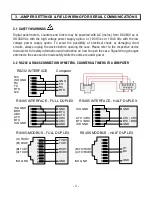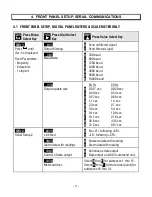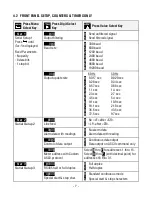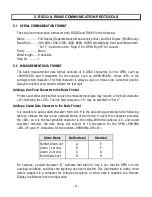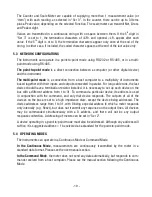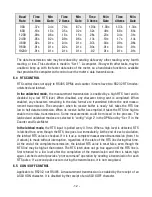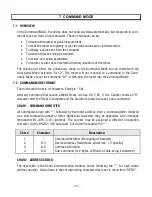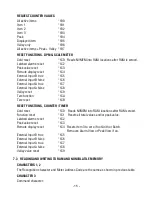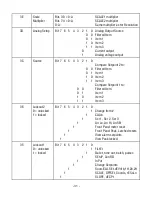
- 17 -
GENERAL, READING AND WRITING NONVOLATILE MEMORY DATA
Nonvolatile data is read and written as a continuous string of words consisting of 2 bytes or 4
hex characters (0-9,A-F) per word. Included in the command is the total number of words to
be transferred and the most significant address in nonvolatile memory of the continuous string
of words. The format is:
Read nonvolatile memory data
*1Xnaa (followed by Meter reset)
Write non-volatile memory data
*1Wnaa <data> (followed by Meter reset)
where: n
is the number of words to be read or written.
aa
is the most significant address in nonvolatile memory of the words to be read or
written.
<data> is n words of 2 bytes or 4 hex characters per word in order from the most to the
least significant address
The coded number of words n consists of a single character representing values from 1 to 30
as shown under CHARACTER 4. The most significant address aa consists of 2 hex characters
as shown under NONVOLATILE MEMORY ADDRESSES.
7.4 COMMAND MODE FOR REMOTE DISPLAY OPERATION OF DPM
OVERVIEW
A DPM can serve as a remote display that responds to values sent via serial communications
by a PC or by another DPM in a Master-Slave configuration. In one application, the DPM sends
readings to a PC, which then processes the readings and transmits values back to the DPM for
display. There are 3 modes in which the DPM may act as a remote display:
MODE 1: DPM with Signal Conditioner Card and not in Remote Display Mode
SETUP (left digit)
= 0
4-1/2 digit DPM
= 2
4-1/2 digit DPM with Count by 10
= 3
3-1/2 digit DPM
The baud rate must be set the same as the source. The PC Controller uses the H command to
cause the display to halt it’s normal readings and display the value sent by Serial Commu-
nications instead. The DPM must be in the Command mode to receive the data. The data format
sent via Serial Communications is:
*#HSDDDDD.A <CR>
where the decimal point is in front, behind (as shown), or
between the D’s (digits).
A total of 11 characters plus a CR must be included and sent as ASCII characters. Those in
quotes below are included as shown. The other symbols represent a range of characters except
for CR which is the ASCII character “0D”.
*
= Command identifier

